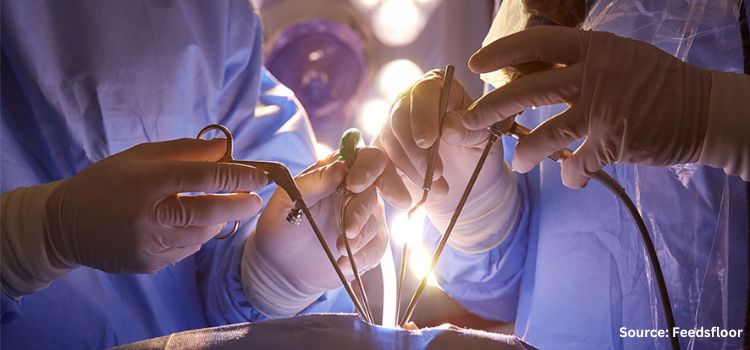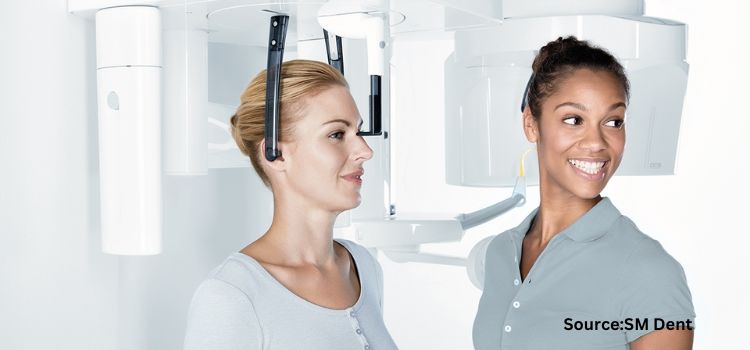Technological Advancements Shaping The Minimally Invasive Surgical Systems Market
17-Feb-2025

Introduction
The landscape of medical interventions is undergoing a revolutionary transformation, with groundbreaking advancements in various realms shaping the future of healthcare. In this exploration, we navigate through the frontiers of technology-driven progress, delving into the realms of robot-assisted surgery, augmented reality (AR) and virtual reality (VR) applications, and others.
According to Next Move Strategy Consulting, the minimally invasive surgical systems market size was valued at USD 33.22 billion in 2023, and is predicted to reach USD 56.21 billion by 2030, with a CAGR of 7.8% from 2024 to 2030. These dynamic developments highlight the current state of medical technology and offer a glimpse into a future where precision, efficiency, and patient outcomes converge seamlessly.
Robot-Assisted Surgery: The integration of robotic systems into minimally invasive surgery represents a transformative trend that is creating substantial opportunities within the market. These advanced robotic systems are pivotal in enhancing the precision and flexibility of surgical procedures, leading to the ability to perform surgeries through smaller incisions and facilitating quicker recovery times. In October 2022, the achievements of Medtronic Plc served as a compelling illustration of the positive impact of this trend on the minimally invasive surgery market.
The company secured approvals for its Hugo robotic-assisted surgery (RAS) system. These approvals encompass CE Mark clearance for general surgery, Health Canada license for general laparoscopic surgery, and Ministry of Health, Labor, and Welfare (MHLW) approval for urological and gynecological indications in Japan. These milestones pave the way for expanded access to minimally invasive surgery across Europe, North America, and Asia-Pacific.
Illustrating the broader adoption of robotic-assisted surgery, Max Hospital introduced the Da Vinci Xi Surgical Robot in November 2021. This state-of-the-art robot replicates the surgeon's hand movements, delivering highly magnified, 3D, and high-definition views of the surgical area. This example highlights the ongoing progress in leveraging robotics to enhance minimally invasive surgical procedures and underscores the evolving landscape of medical technology.
Augmented Reality (AR) and Virtual Reality (VR): The surge in the adoption of Augmented Reality (AR) and Virtual Reality (VR) technologies within surgical systems is reshaping the landscape of minimally invasive surgery. These immersive technologies bring a multitude of applications, enhancing surgical precision, efficiency, and training methodologies.
The integration of AR and VR in minimally invasive surgery not only boosts the capabilities of surgeons but also holds the potential to improve patient outcomes by reducing errors and complications. As these technologies continue to progress, their incorporation into surgical systems is poised to become more prevalent than before, influencing the future trajectory of minimally invasive surgical procedures.
A noteworthy example of this trend is Royal Philips' introduction of ClarifEye, an AR surgical navigation solution designed to advance minimally-invasive spine surgery in hybrid operating theaters. Philips states that by combining 2D and 3D visualizations at very low X-ray doses with 3D augmented reality, ClarifEye provides live intra-operative visual feedback.
This will facilitate the precise placement of pedicle screws during spinal fusion surgery. Philips emphasizes that ClarifEye seamlessly integrates into the Philips Azurion image-guided therapy platform, showcasing the ongoing innovation in the application of AR to enhance surgical procedures.
Electrosurgical Advancements: The continuous advancements in electrosurgical instruments and techniques mark a transformative era in the field of medical procedures, significantly influencing tissue cutting, coagulation, and overall procedural efficiency. Electrosurgery, which utilizes high-frequency electrical currents to cut, coagulate, or vaporize tissues during surgical procedures, has undergone remarkable developments to improve precision, safety, and patient outcomes.
One key aspect of these advancements lies in refining electrosurgical generators and instruments. Modern electrosurgical generators, such as the ESG-410 from Olympus Corporation, exemplify the integration of cutting-edge technologies for enhanced performance. These generators are equipped with a diverse range of settings and features that allow surgeons to tailor the energy delivery precisely to the specific requirements of each procedure.
The evolution of electrosurgical instruments also extends to the development of specialized tools designed for specific medical conditions and procedures. For instance, in the case of the ESG-410, its support for treating non-muscle-invasive bladder cancer (NMIBC) and benign prostatic hyperplasia (BPH) showcases the adaptability of these instruments to address a spectrum of medical challenges. The availability of resection loops, band electrodes, and vaporization buttons & needles allows for a comprehensive and tailored approach, contributing to better outcomes for patients undergoing treatment for these conditions.
Advanced Imaging Techniques: The field of minimally invasive surgery has witnessed significant advancements in imaging technologies, contributing to improved visualization and precision during procedures. Notably, innovations such as 3D imaging, fluorescence imaging, and real-time imaging guidance have played a crucial role in enhancing surgical outcomes by aiding surgeons in better navigation and decision-making than before.
One noteworthy development in this context is the introduction of the Azurion Lung Edition by Royal Philips. This platform represents a state-of-the-art three-dimensional (3D) imaging and navigation system designed specifically for bronchoscopy procedures. It is designed to support clinicians in diagnosing and treating lung cancer by employing a blend of advanced imaging techniques.
The Azurion Lung Edition integrates CT-like 3D images using cone-beam CT, live X-ray guidance, and advanced tools, creating a comprehensive and dynamic environment for image-guided lung procedures. This innovative system allows clinicians to perform minimally invasive endobronchial biopsies and lesion ablation within the same procedure. By combining these capabilities, the platform facilitates more efficient and precise interventions than before, ultimately contributing to improved patient outcomes in the realm of lung cancer diagnosis and treatment.
Ambulatory services: Ambulatory services, commonly known as outpatient care, encompass a variety of diagnostic and therapeutic medical services that are administered without the need for hospital admission. These services, which include emergency visits and rehabilitation sessions, have experienced the heightened demand. This is due to the growing prevalence of chronic diseases, such as cancer, heart disease, stroke, and diabetes.
An additional catalyst for the expansion of ambulatory services lies in the integration of robotics, particularly in the context of minimally invasive surgery (MIS). The utilization of robotics in ambulatory services empowers healthcare professionals to conduct intricate procedures with enhanced precision, greater flexibility, and superior control compared to traditional open surgery methods. This technological advancement not only aligns with the evolving landscape of outpatient care but also underscores the pivotal role of advanced technologies in the realm of MIS.
For instance, in March 2022, CMR Surgical achieved a significant milestone by introducing the Versius Surgical Robotic System, successfully installed in an outpatient surgical practice in Europe for hernia surgery. This instance highlights the seamless integration of robotic technology into ambulatory settings, demonstrating the potential for MIS to be performed with greater precision and efficiency in outpatient care scenarios.
The incorporation of robotics into ambulatory services not only facilitates complex surgeries but also contributes to accelerated recovery periods and decreased postoperative complications for patients. This integration reflects a commitment to advancing MIS within the context of outpatient care, offering patients more accessible and technologically advanced medical interventions than before.
The integration of AI in Surgical robotics: The integration of AI in surgical robotics represents a significant opportunity for the minimally invasive surgical systems market. AI plays a crucial role in optimizing surgical workflows by providing real-time data analysis, allowing surgeons to make informed decisions during procedures.
The utilization of AI in minimally invasive surgical systems also contributes to the development of smart instruments and devices. These intelligent tools offer features, such as autonomous navigation, adaptive control, and real-time feedback. They further augment the capabilities of surgeons and improve patient outcomes.
Moreover, the integration of AI in surgical robotics not only enhances the capabilities of minimally invasive surgical systems but also opens up new avenues for innovation, improved patient care, and increased efficiency in the healthcare industry. Thus, technological advancement presents a promising future for the growth and development of the minimally invasive surgical systems market.
For instance, in September 2023, US Medical Innovations (USMI) and the Jerome Canady Research Institute for Advanced and Biological Technological Sciences (JCRI-ABTS) launched the new Canady Robotic AI Surgical System. It is claimed to be the world’s first artificial intelligence (AI) robotic system that generates cold atmospheric plasma (CAP) and a three-dimensional non-contact bioelectric pulse electromagnetic field. This innovative venture not only showcases a commitment to technological advancement but also underscores a dedication to pushing the boundaries of patient care within the dynamic landscape of healthcare.
Conclusion:
In essence, all these advancements hold a promising future for minimally invasive surgical systems. This not only reflects a commitment to technological innovation but also underscores a dedication to enhancing patient care within the constantly evolving healthcare environment. As we move forward, these groundbreaking advancements are set to redefine the standards of medical interventions, offering a glimpse into a future where precision and innovation converge for the betterment of global healthcare.
About the Author
 Sikha Haritwal is a researcher with more than 3 years of experience. She has been keeping a close eye on several industry verticals, including Banking, Financial Services, and Insurance (BFSI), personal care products, and consumer electronics. She has avid interest in writing news articles and hopes to use blog as a platform to share her knowledge with others. When she is not following industry updates and trends, she spends her time reading, writing poetry, cooking, and photography. The author can be reached at info@nextmsc.com
Sikha Haritwal is a researcher with more than 3 years of experience. She has been keeping a close eye on several industry verticals, including Banking, Financial Services, and Insurance (BFSI), personal care products, and consumer electronics. She has avid interest in writing news articles and hopes to use blog as a platform to share her knowledge with others. When she is not following industry updates and trends, she spends her time reading, writing poetry, cooking, and photography. The author can be reached at info@nextmsc.com
Add Comment
Related Blogs
Role Of Companies In Shaping The Blood Gas And Electrolyte Analyzer Market
According to Next Move Strategy Consulting, the global blood...
Analysis of Key Players Operating in the Global Surgical Instrument Industry
Next Move Strategy Consulting forecasts more than 1.7-fold g...
CBCT Industry Is Dominated By Dentsply Sirona, Philips, & Vatech With More Than 45% – Know Why
Next Move Strategy Consulting predicts a significant growth...











